Solar power expands in Collier, as utilities and their customers seek energy alternatives
As a biologist and environmentalist, Carol Rizkalla took a keen interest in solar.
After hearing about a solar co-op in Southwest Florida, she "joined immediately."
As a newer resident of rural Golden Gate Estates, in eastern Collier County, she wanted to live a greener life. The sustainability of solar attracted her – and so did the potential for savings, which made her husband more interested in the idea.
"For him, I think it was more about cost," she said.
In early 2023, she joined a co-op organized by Solar United Neighbors, a national nonprofit, known for short as SUN, which has helped many homeowners and business owners across the country "go solar" with rooftop panels, through a community approach that offers support and discounts.
The group is just one of the many contributors to the growth of solar in Southwest Florida and the state. Industry data shows that the United States had its biggest year ever for solar installations in 2023, and that Florida ranked second only to California.
Rizkalla is now seeing the environmental and financial benefits of 30 panels on her roof.
The co-op she joined had nearly 150 members in Lee and Collier counties. It chose Fort Myers-based Florida Solar Design Group through a competitive bidding process to handle their installations, based on the company's experience, reputation and warranties, not just on its rate.
Neighborhood solar co-ops heat up
Solar United Neighbors has organized two co-ops in Southwest Florida so far, and plans to launch a third one soon, based on the strong interest. There are already names on a wait list, said Heaven Campbell, the group's program director for Florida.
On average, 30% of the members who join a co-op end up installing solar, through the chosen or "winning" company, which is a much-higher conversion rate than contractors normally see when working with property owners one-on-one, she said.
While she initially got a quote for panels that could have produced enough energy to cover "99% of her needs," the cost to install that much solar capacity ran too high, and so did the cost to insure it, Rizkalla recounted. So, she opted for a lesser number of panels that provides for about 70% of her household's demands for a 1,640-square-foot home, with three bedrooms and two bathrooms.
Unexpectedly, she had to switch insurance companies because hers would not cover the panels.
On a bright note, she said: "I think it's for the better, because I heard the company wasn't renewing policies and would probably leave Florida anyway."
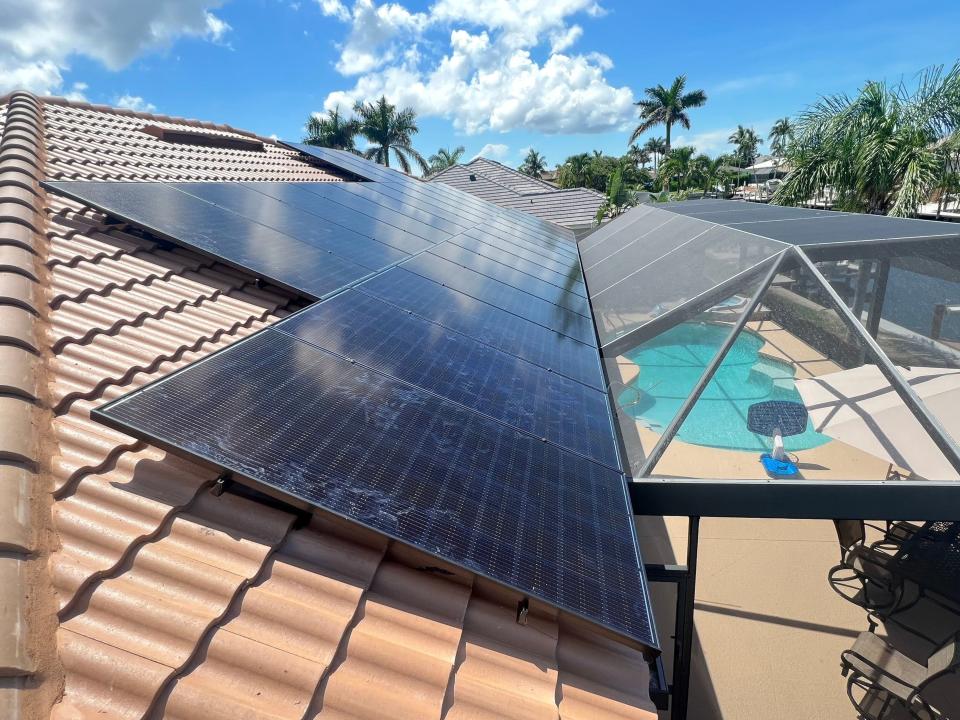
Instead of 50 panels, she went with 20 fewer.
"I still have an electric bill that is less than $100, where, before, it was well over $300," Rizkalla said.
Although she financed the cost of going solar, even with the monthly cost to pay off the loan, she's saving money. Plus, she'll have the added benefit of a federal tax break for her investment in the panels. The Inflation Reduction Act extended the 30% solar tax credit to 2032.
Solar isn't right for everyone
Members of co-ops who don't end up installing panels often make that decision based on cost.
Solar isn't right for everyone, with many factors to consider, including energy use, Campbell acknowledged.
Naturally, panels shouldn't be installed on an older roof, for example, or a roof that is heavily shaded by trees or by other structures.
The switch to solar should be viewed as a long-term investment that will pay itself off over time, as panels can last 25 years or longer, so it makes the most sense for homeowners who plan to stay put for a while, not move around, Campbell said.
"Solar itself, it's hard to make it economically not work because you are self-consuming your own energy, so it usually helps you save on your utility bill," she said. "It future-proofs you against utility bill increases."
Solar United Neighbors has worked to educate and protect consumers in Florida since 2015, when it was approached by an Orlando-area resident who wanted her church to go solar. While the church never installed solar, many in its congregation did at their own homes, with help from the support group, Campbell said.
"The church had a major building renovation. Now, they're about to go solar," she shared.
Floridians have some of the highest electricity bills in the Southeast, but it can't all be blamed on the rates charged by utilities. On average, users consume a lot of energy in the state, with air-conditioning and heating systems among the biggest culprits, Campbell said.
"Floridians don't want to be hot or cold," she said. "Most utilities in Florida have summer and winter peaks."
Since its inception, Solar United Neighbors has formed more than 400 co-ops in 14 states, the District of Columbia and Puerto Rico.
"We are working on our 86th co-op in Florida," Campbell said. "So, I like to say we are the biggest and brightest."
Installer sees high demand
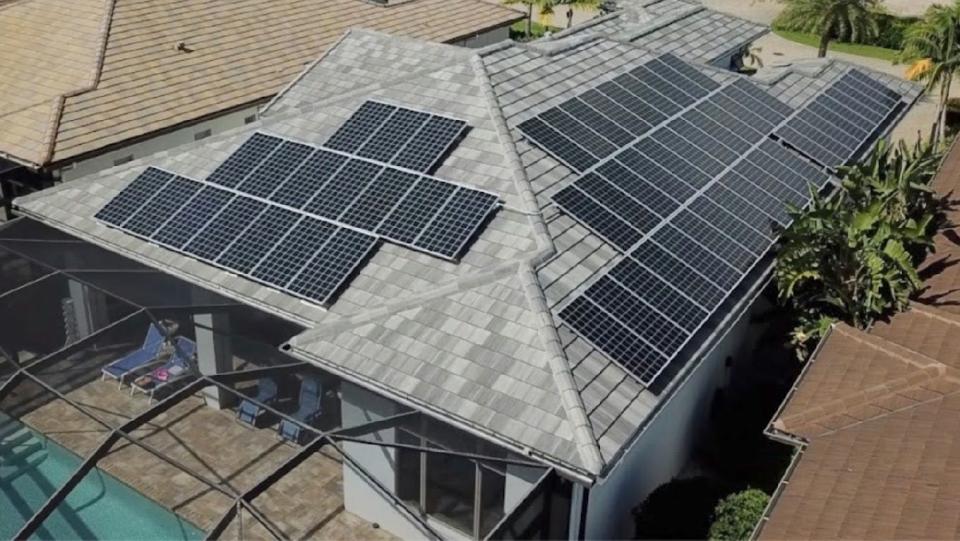
The Florida Solar Design Group, one of the largest solar installers in Southwest Florida, has been the chosen contractor for two Solar United Neighbors co-ops in the region. Co-owner Dominick Zito said the biggest issue with the last co-op was that it overlapped with Hurricane Ian in 2022, so some who planned to do solar installations within the established timelines couldn't because of severe roof damage.
"We still have people that are extremely interested and want to go with solar, but that have to wait until their insurance settlement," he said.
Despite Ian, the co-op resulted in 21 installations, which will produce more than $1 million in savings over 25 years to the customers.
The company's participation in its first co-op in 2020 resulted in 12 installations, generating $750,000 of savings for its clients, and producing even more solar capacity than in its first one, based on the size and location of the installations back then.
"These are huge, huge numbers for us." said Zito, a self-professed solar geek, who has been in the business for more than a decade.
"Solar in the Sunshine State, there is a definite business model for it," he said. "There is an absolute return on investment for consumers, both commercial and residential."
The more visible solar panels get in Florida the more acceptable they become, with more potential customers feeling less apprehensive about investing in them, Zito said.
"You don't have to be a tree-hugger anymore to go solar," he said.
Business is booming
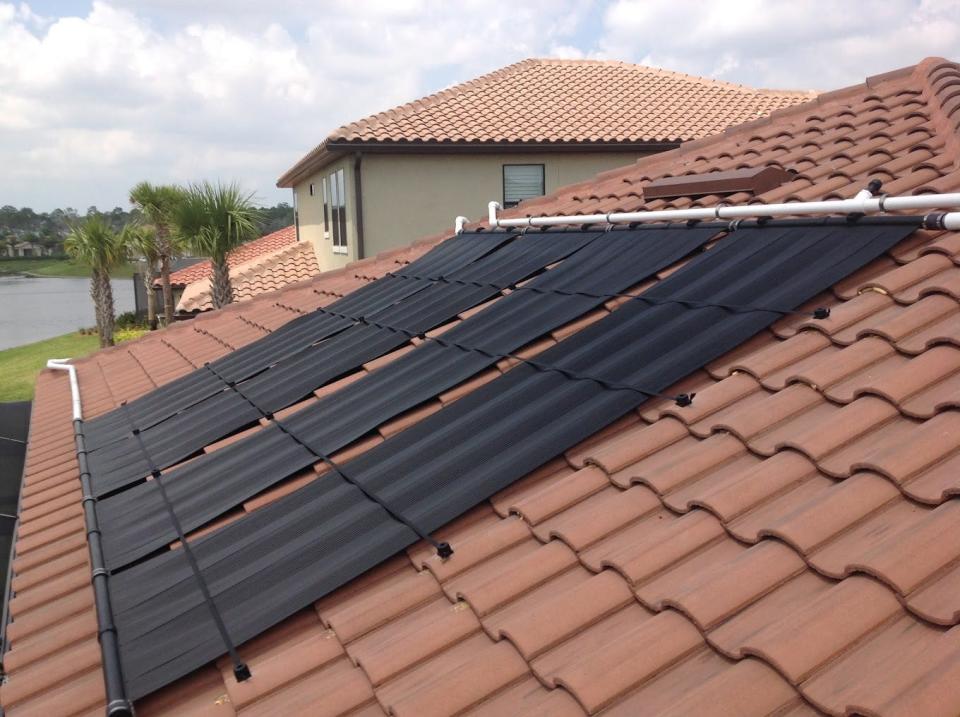
The Florida Solar Design Group primarily serves Collier, Lee and Charlotte counties, where business is booming.
"There has been a very big increase in solar and solar interest in Southwest Florida," by residents, Zito said.
Over the past few years, the company has seen a 30% to 35% increase in its annual book of business, with residential installations making up about 85% of its installations, Zito said.
He attributes the heightened interest primarily to higher electric bills, which many are struggling to pay as they face higher costs in general, driven by inflation.
His company installs two types of solar — thermal for pool heating, and photovoltaic for powering homes and other buildings.
"Solar photovoltaic is really coming on strong in the industry in Southwest Florida," Zito said. "The big problem is there are a lot of doorknockers and sales agencies that are really misleading homeowners."
That's why he suggests those who are interested in installing solar talk directly with representatives of solar companies. He and the company's other owner both meet individually with prospective clients, to make sure the clients understand what they are getting into, where their money is going and what they can expect in the end.
"Every time we install a solar electricity system it's benefiting the homeowner or property owner, by reducing their electricity bill and their dependence on the power companies," Zito said. "So that savings goes directly" to them.
It's important for potential customers to understand they may still have to pay an electricity bill, however, depending on how many panels are installed and the location of the panels.
If the deal offered by a sales agent — who works on commission — sounds too good to be true, it probably is, and you should "run the other way," Zito warned.
"I love the fact that everybody is going solar to help the environment and future generations," he said. "That's absolutely spectacular. That's my goal, as the business owner. But I do not like people getting taken advantage for doing the right thing. For going solar, for promoting renewal energy."
Solar-powered town
In Southwest Florida, developer Syd Kitson has found a way to power an entire town with the sun, in partnership with FPL. The town is home to one of the power company's growing number of solar energy plants in the state.
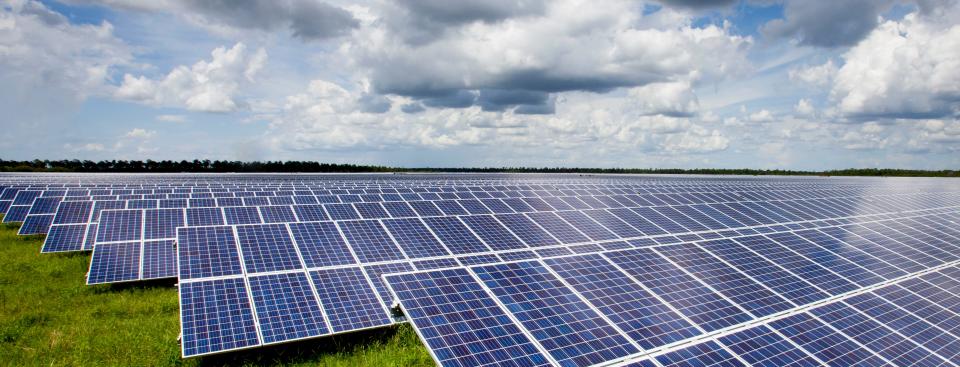
When he proposed what became America's first solar-powered town, Kitson faced doubts from many, who thought it could never be done, even in sunny Florida. To say his critics considered him "crazy," he said, would put it nicely.
The skepticism only added fuel to his fire to build an environmentally friendly, sustainable community, not reliant on the electrical grid. While it took eight years to come to fruition, Babcock Ranch is thriving as one of the top-selling master-planned communities in the country. (Kitson & Partners is also the developer of Talis Park in Naples.)
"It is something that goes back many years," Kitson said. "It has always been a goal of mine to prove a new town and the environment can work hand in hand. I'm a strong environmentalist, and I know that sounds crazy, when you have a 'developer' that's a strong environmentalist."
The idea of renewable energy as a power source for a new town also faced its share of opposition.
"There were a lot of people that just weren't in favor of it," Kitson said. "A lot of those people had interests in oil and gas. So, the thought of having solar energy come in, and be a source of energy, probably just wasn't very attractive to them."
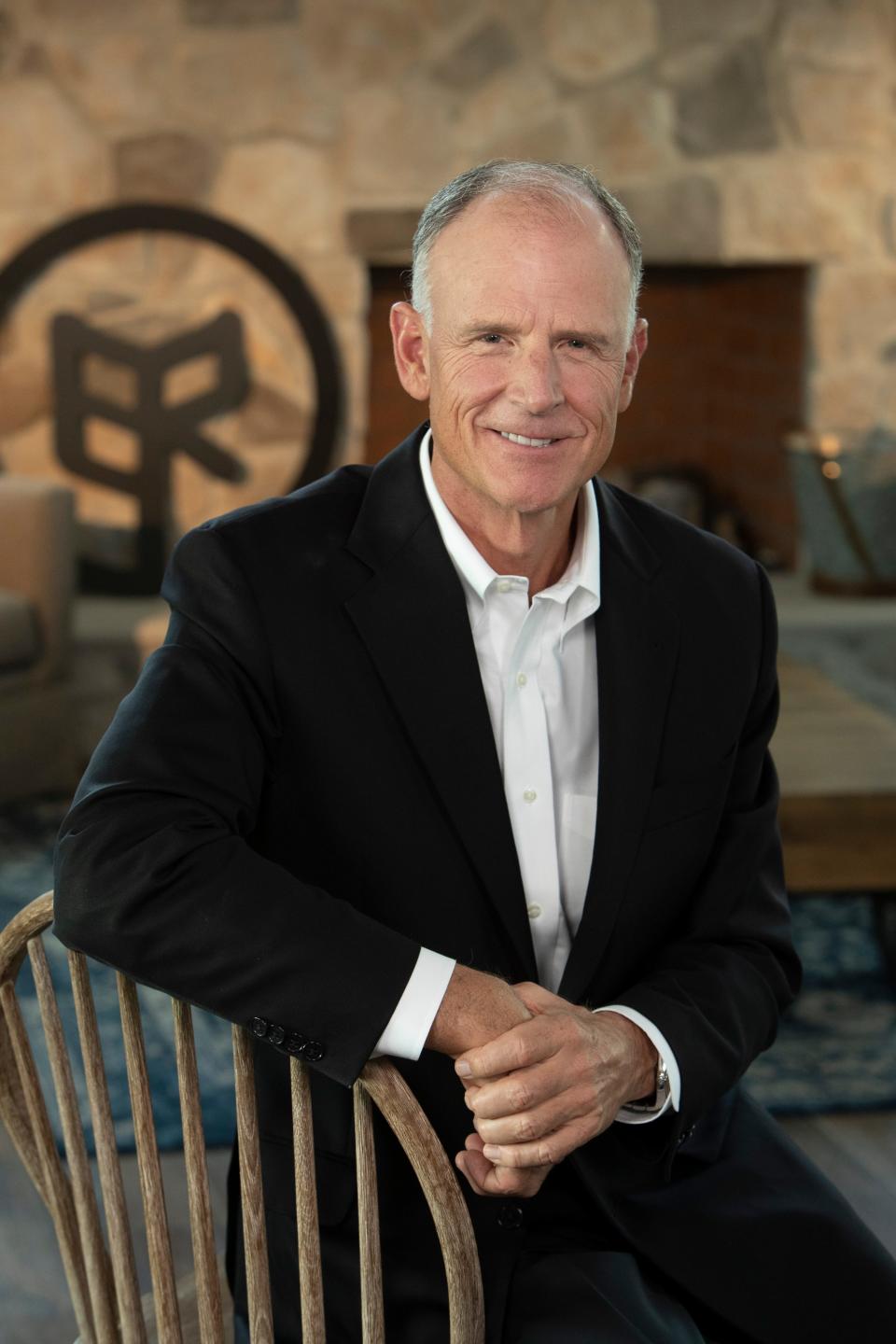
Time magazine recently named Kitson, chairman and CEO of Kitson & Partners, as its "Dreamer of the Year," recognizing his success at Babcock Ranch.
With his idea proven, other developers are interested in copying it in the United States ― and beyond. He said that's the biggest compliment.
In May, home sales reached the 3,000 mark. Sales have been faster than expected, which Kitson attributes in part to Babcock's resiliency as a solar-powered town.
The town, sitting east of Fort Myers, is powered by an 870-acre solar farm, with the country's largest solar-plus-battery storage system.
The community's biggest test came during Hurricane Ian in September 2022, and it didn't disappoint. No one lost power, and not one solar panel was lost during the Category 4 storm, despite its ferocious winds.
Part of the land remains a working cattle ranch, and Kitson sold a huge chunk of the 91,000 acres he purchased to the state and Lee County for preservation. The Babcock Ranch Preserve covers 80% of the original property, making him extremely proud as a nature lover.
Made up of nearly 700,000 individual panels, the community's solar farm will power more than 19,000 residences at build-out, along with businesses and schools. The town, encompassing more than 18,000 acres, is expected to eventually have about 55,000 residents, living in a mix of housing, including rental apartments.
Now, the community has about 10,000 residents.
"There is probably a good 10 years left, in terms of home sales, but it's going very fast," Kitson said. "It's going a lot quicker than we thought it would."
Laura Layden is senior business reporter at the Naples Daily News. Contact Layden at Laura.Layden@NaplesNews.com
This article originally appeared on Fort Myers News-Press: Southwest Florida growth in solar power expected to continue

